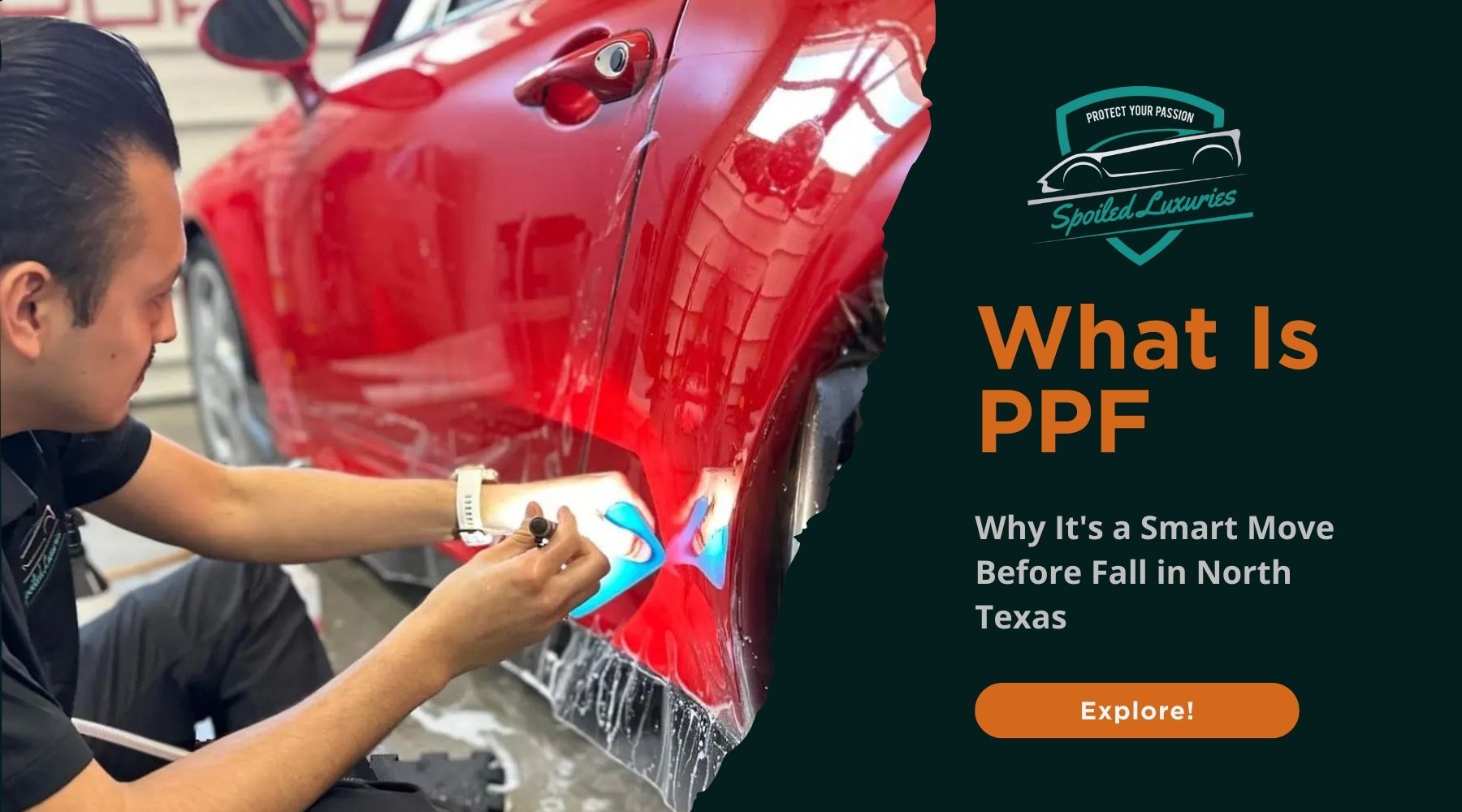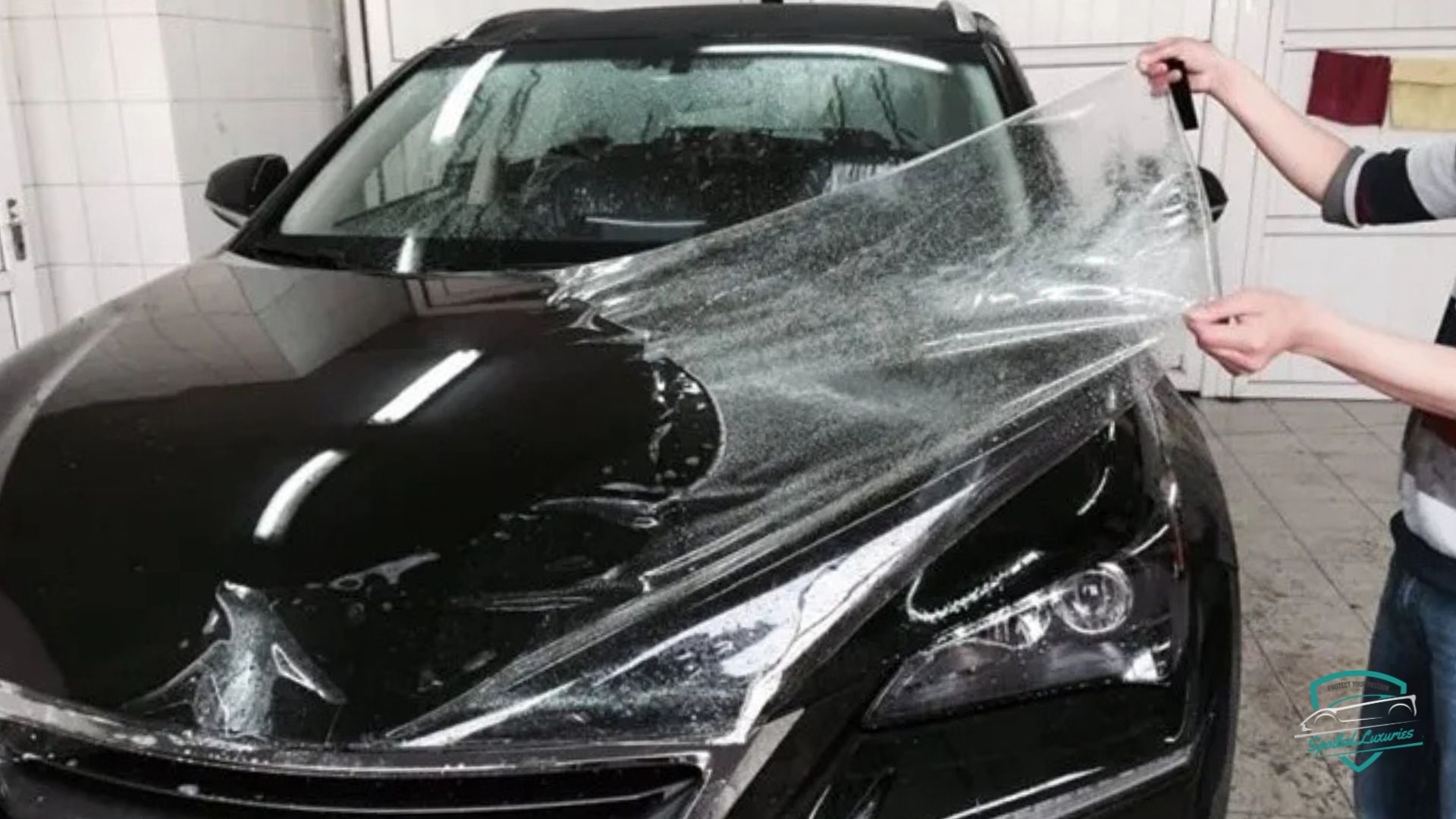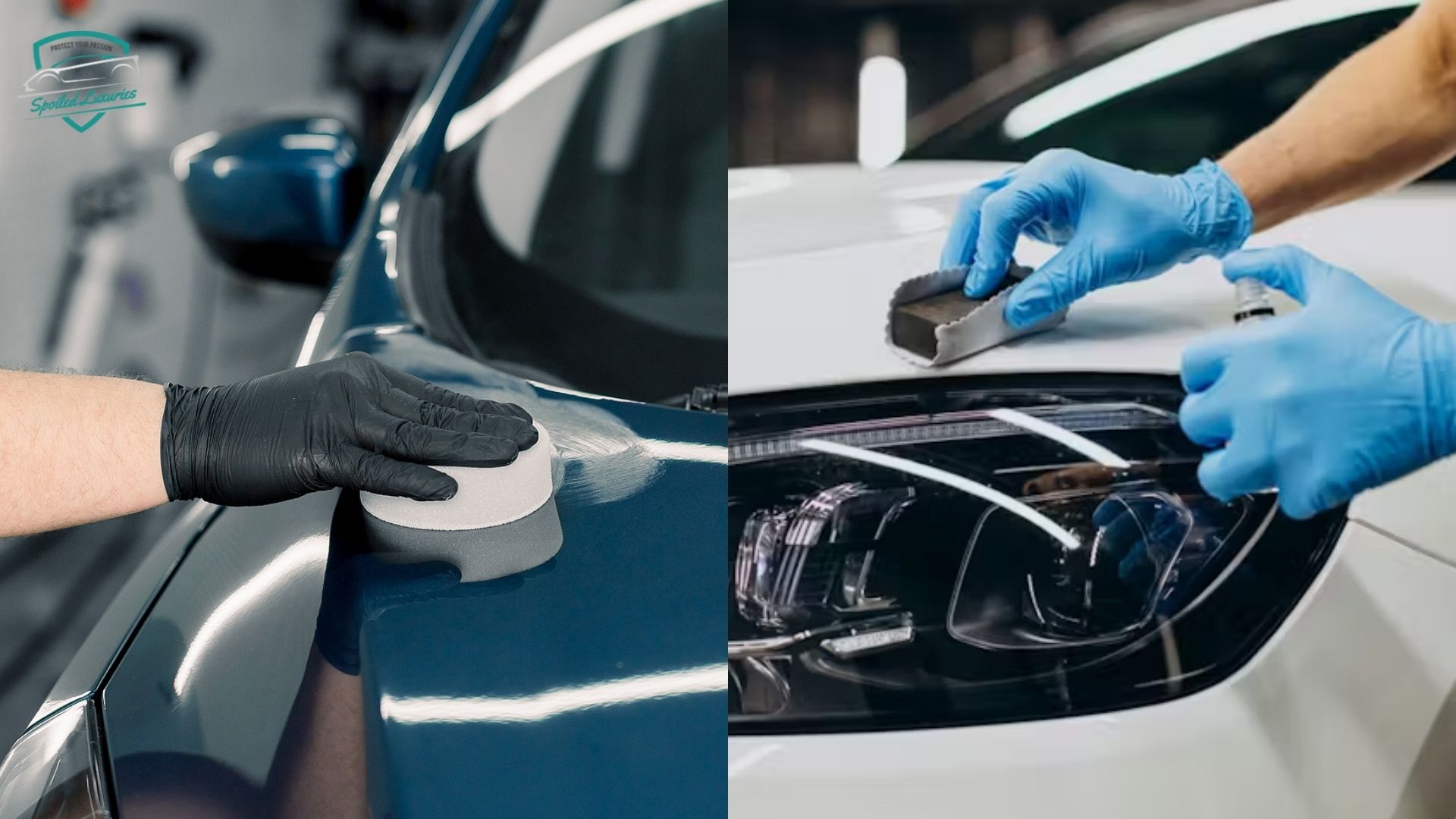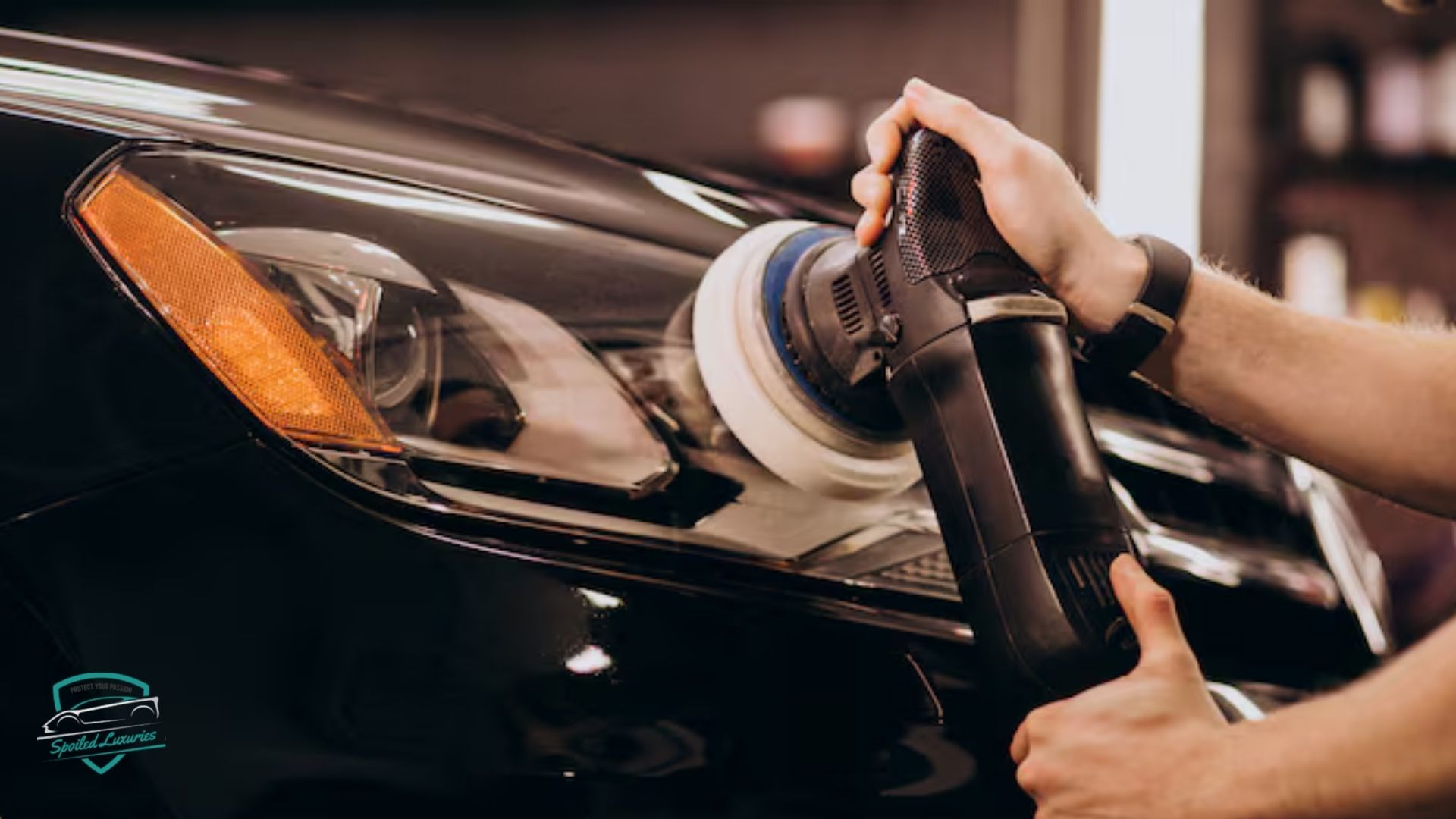As the scorching Texas summer winds down, your car may be showing signs of wear, faded paint, bug splatter, or the beginnings of rock chips. If you’re wondering how to protect your investment before fall arrives, Paint Protection Film (PPF) might be your answer. But what is PPF exactly, and why is now the ideal time for drivers in Dallas and across North Texas to consider it?
Let’s break it down.
What Does PPF Stand For?

PPF stands for Paint Protection Film, a nearly invisible, high-performance layer of thermoplastic urethane film that is professionally applied to a vehicle’s exterior surfaces. Imagine it as a shield, similar to a screen protector for your phone, but engineered to withstand far harsher conditions.
Originally developed by the U.S. military during the Vietnam War to protect helicopter rotor blades from flying debris, the technology has since evolved for civilian automotive use. Today’s PPF is a sophisticated, multi-layered material designed to absorb impacts, resist scratches, and block harmful UV rays, all while maintaining your car’s natural shine.
Whether you’re driving a luxury sedan, a daily commuter, or a weekend sports car, PPF offers essential protection from rock chips, bug splatter, bird droppings, and the harsh Texas sun. It’s an investment in both performance and peace of mind, ensuring your paint stays flawless for years to come.
How Does PPF Work?
Paint Protection Film (PPF) acts as an invisible shield, defending your car’s paint from the everyday abuse of driving in North Texas. Whether you’re cruising down I-35 or parked under the blazing sun, PPF provides round-the-clock protection.

PPF deflects and resists:
- Rock chips and road debris kicked up by fast-moving traffic
- UV rays that accelerate paint fading and oxidation
- Bug splatter, bird droppings, and road salts that can stain or etch paint
- Swirl marks and minor scratches from washing or brushing against objects
What's inside the film:
PPF isn’t just one layer; it’s a high-tech stack of performance materials:
- Durable urethane base layer: Absorbs impact and prevents physical damage
- Self-healing top coat: Uses heat (from sunlight or warm water) to “heal” light scratches and swirl marks automatically
- Hydrophobic surface layer: Repels water, grime, and contaminants, making washing easier and less frequent
Some premium films also include anti-yellowing agents and optical clarity enhancers, ensuring the film stays clear and doesn’t dull your paint over time.
The result? A longer-lasting, better-looking finish, with fewer wash days and virtually no need for touch-ups.
Paint Protection Film Benefits
Installing PPF offers more than just protection; it enhances your entire ownership experience. Here’s how:
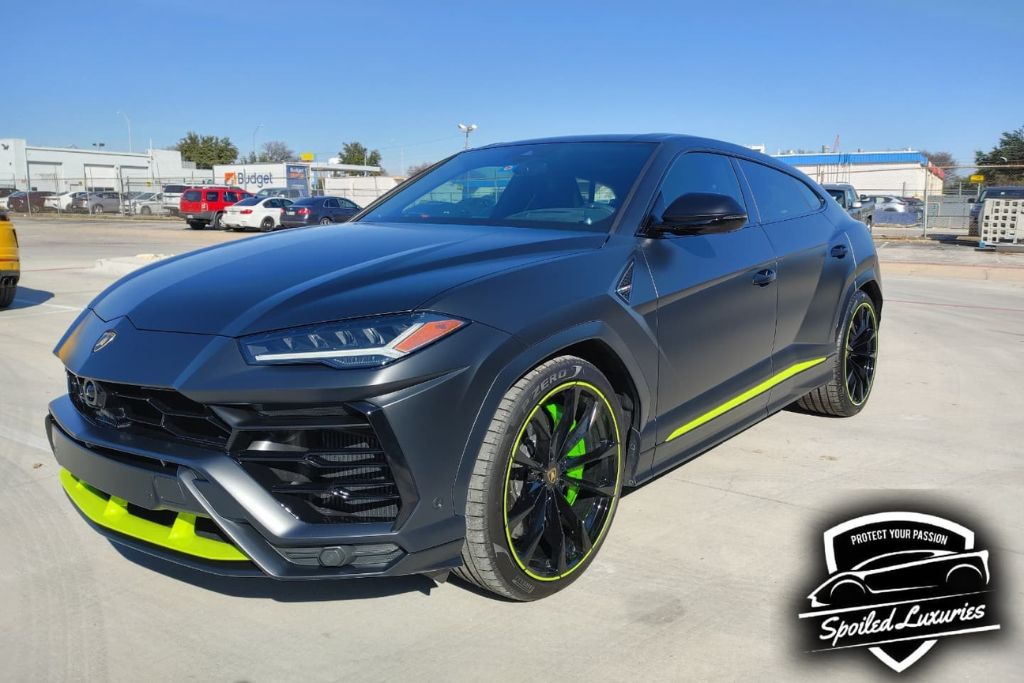
1. Physical Protection
PPF acts as a first line of defense against harsh road conditions. It absorbs the impact of gravel, sand, and small debris, preventing chips and scratches that could otherwise lead to costly paint repairs. In cities like Dallas, where road construction is practically year-round, this kind of protection is essential for daily drivers.
2. UV-Blocking Vehicle Shield
The film’s UV-blocking technology safeguards your vehicle from Texas’ relentless sun. By filtering out harmful rays, PPF helps prevent fading, oxidation, and paint discoloration, especially for darker-colored cars or vehicles that are frequently parked outdoors.
3. Self-Healing PPF Technology
Modern PPF features a self-healing top coat that uses heat to smooth out fine scratches and swirl marks. This keeps your car looking freshly detailed without frequent polishing. Whether from automated car washes or accidental scuffs, light imperfections virtually disappear over time.
4. Hydrophobic Surface Protection
With a hydrophobic top layer, PPF repels water, mud, and grime. It also resists contaminants like tree sap and bug acids, making cleanup faster and reducing long-term paint damage. It’s like having a built-in water-repellent coating, ideal for unpredictable fall weather.
5. Aesthetic Enhancement
PPF doesn’t just protect, it enhances your vehicle’s appearance. Choose between high-gloss finishes that deepen your paint’s shine or matte finishes for a sleek, modern, and understated style.
Why PPF Is a Smart Move Before Fall in North Texas
Fall in North Texas brings more than football games and cooler air, it signals a critical time to protect your vehicle’s finish from seasonal threats. Here’s why installing Paint Protection Film (PPF) now is a smart decision:
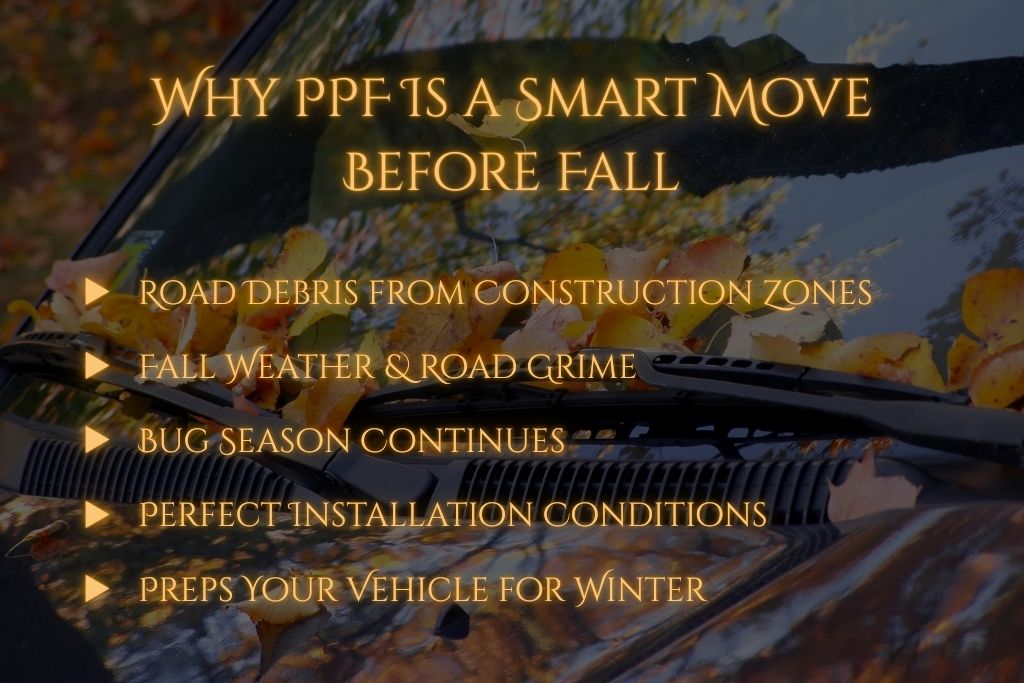
▸ Road Debris from Construction Zones
Dallas and the greater DFW area are infamous for constant roadwork. Whether you’re commuting on US-75 or navigating I-635, your vehicle is at daily risk from flying gravel, loose asphalt, and sharp debris. PPF provides a vital barrier against these projectiles, preventing unsightly chips and long-term damage.
▸ Fall Weather & Road Grime
Autumn introduces slick roads from rain, falling leaves, and early seasonal treatments like brine or sand. These elements can stain, etch, or dull your paint if unprotected. PPF resists chemical contaminants, making post-storm cleanups significantly easier.
▸ Bug Season Continues
While summer’s heat may fade, bugs in Texas stay active well into the fall, especially during long drives. Bug splatter is not only acidic but can also be tough to clean. PPF’s hydrophobic properties help repel these contaminants, preventing them from etching into the clear coat.
▸ Perfect Installation Conditions
Fall offers a unique sweet spot for PPF installation. The mild temperatures and lower humidity allow the adhesive to bond more effectively and cure properly. This results in improved film clarity, fewer installation issues, and longer-lasting results.
▸ Preps Your Vehicle for Winter
By installing PPF now, you’re also getting ahead of winter hazards like sand, salt, and ice-related debris that can cause damage to your car’s finish. It’s preventative protection that pays dividends across seasons.
In short, fall is not just a good time; it’s the best time to armor up your vehicle with PPF in North Texas.
How Long Does PPF Last?
When professionally installed, high-quality Paint Protection Film (PPF) can last anywhere from 5 to 10 years, even under North Texas’s intense sun and unpredictable weather. Several key factors influence its longevity:
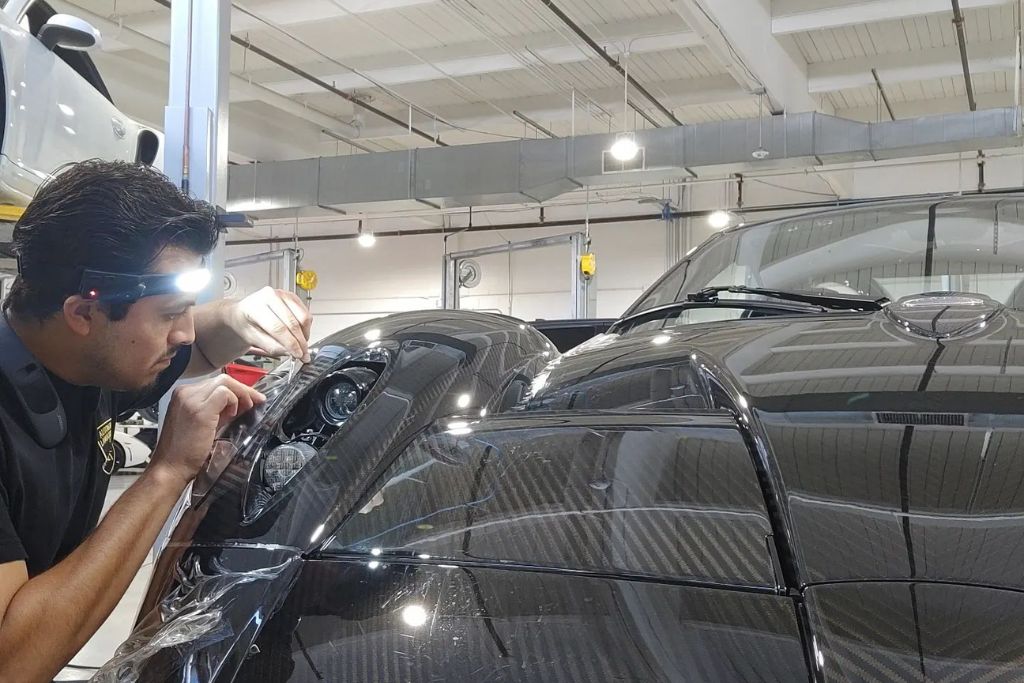
- Film Quality: Premium brands like STEK and XPEL are engineered with advanced self-healing technology, UV resistance, and anti-yellowing properties, ensuring clarity and durability over time.
- Installation Technique: Proper installation is critical. Certified professionals, like those at Spoiled Luxuries, ensure a flawless application with no bubbles, stretching, or peeling issues, which can shorten the film’s lifespan.
- Ongoing Care: Routine maintenance, such as gentle hand washing and avoiding abrasive cleaners, helps preserve the film’s performance. Occasional inspections can catch minor issues before they become major ones.
With the right installer and proper care routine, PPF not only lasts, but it also continues to protect and enhance your vehicle’s appearance for years to come.
Choosing the Right PPF Installer in North Texas
When it comes to paint protection, the installer matters just as much as the film itself. Poor application can lead to bubbling, peeling, or reduced durability, costing you more in the long run.

At Spoiled Luxuries, we’re not just applying film; we’re elevating your vehicle’s protection. Led by José Paredes, our team brings over 12 years of certified experience in luxury automotive care, combining precision techniques with a client-first approach.
We specialize in:
- Custom-fit installations using plotter-cut patterns or hand-trimming for complex curves
- Premium-grade films like STEK and XPEL, known for clarity, durability, and self-healing performance
- Flexible service options tailored to your lifestyle and vehicle type
From exotic cars to daily commuters, every vehicle receives dealership-level quality and the attention to detail of a boutique studio. When you choose Spoiled Luxuries, you’re choosing lasting protection with results you can see.
🚗 Protect Your Car the Smart Way
Don’t let Texas roads damage your paint. Choose partial or full PPF coverage with Spoiled Luxuries and drive protected year-round.
👉 Book your consultation now and get expert-installed protection that lasts.Full or Partial Coverage: What's Best for Texas?
In a high-impact region like Dallas–Fort Worth, where road debris, harsh sun, and dense traffic are daily realities, full PPF coverage offers unmatched protection and peace of mind.
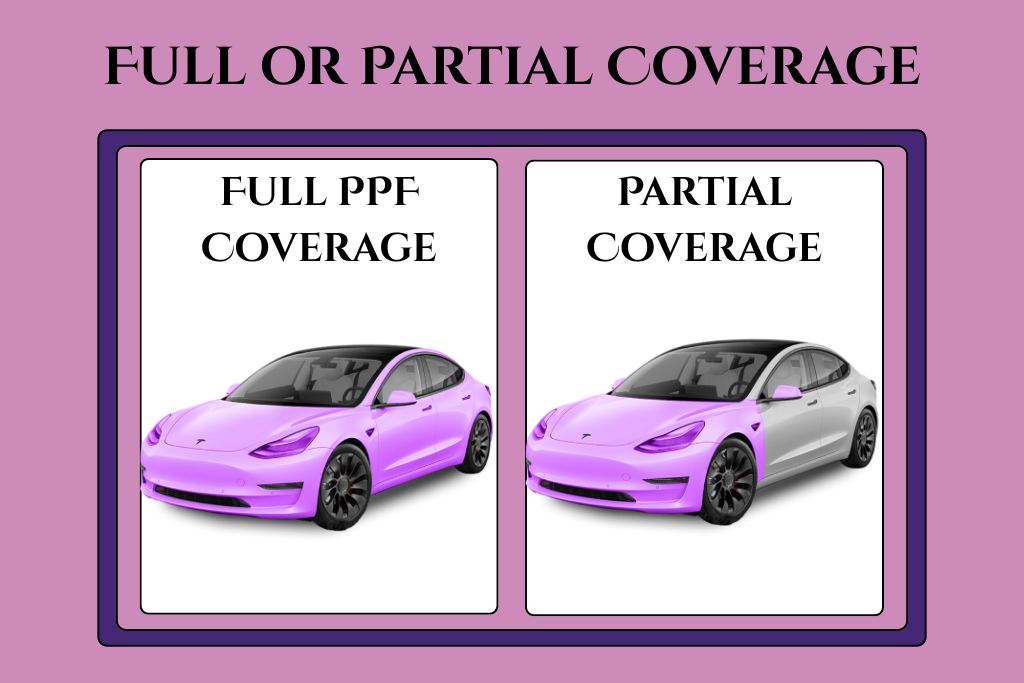
Full Coverage Protects:
- Entire hood, bumpers, fenders, and mirrors from rock chips and bug splatter
- Rocker panels, door edges, and A-pillars, which are vulnerable in tight parking lots and drive-thrus
- Rear trunk ledge and bumper, areas often scuffed when loading groceries or gear
Partial Coverage Includes:
- Front-facing areas like the hood, bumper, and side mirrors
- A good starting point for budget-conscious drivers
While partial packages are effective for common impact zones, full coverage is ideal for those who plan to keep their car for a long time, frequently drive on highways, or own higher-end vehicles. It maximizes protection and maintains resale value by preserving your car’s original paint across all surfaces.
Final Thoughts
So, what is PPF, and why is it the right move this fall in North Texas?
It’s simple: PPF is the ultimate shield for your car’s paint, especially when applied by certified experts like those at Spoiled Luxuries. From UV defense and bug-repelling properties to rock-chip resistance and self-healing capabilities, PPF keeps your car looking flawless year-round.
🍂 Ready to protect your vehicle before fall hits?
Schedule your PPF consultation today and experience the difference in elite car care in Dallas.
FAQs: People Also Ask
❓ What is the purpose of the PPF?
To protect your car’s paint from physical and environmental damage, keeping it looking newer, longer.
❓ Why is PPF so important?
Because repainting a car can cost thousands, PPF prevents that by preserving the original finish.
❓ Why does PPF improve resale value?
Buyers prefer well-maintained, original paint. PPF prevents fading, scratches, and damage that reduce a car’s value.
❓ Why is it important to choose a certified PPF installer in North Texas?
North Texas has extreme weather and road conditions. You need an expert like Spoiled Luxuries who understands local challenges and uses materials that last.
❓ Why might full‑coverage PPF offer more benefit than partial coverage in Texas?
Because Texas roads are tough on cars. Full coverage shields vulnerable areas beyond just the hood and bumper, like rocker panels and rear fenders.
Spoiled Luxuries
5.0 
Window tinting service in Dallas, Texas
Address:
3141 Irving Blvd suite 210, Dallas, TX 75247, United States
Phone:
Phone: +1 214-210-7402
Google Reviews
Reviews from the web
